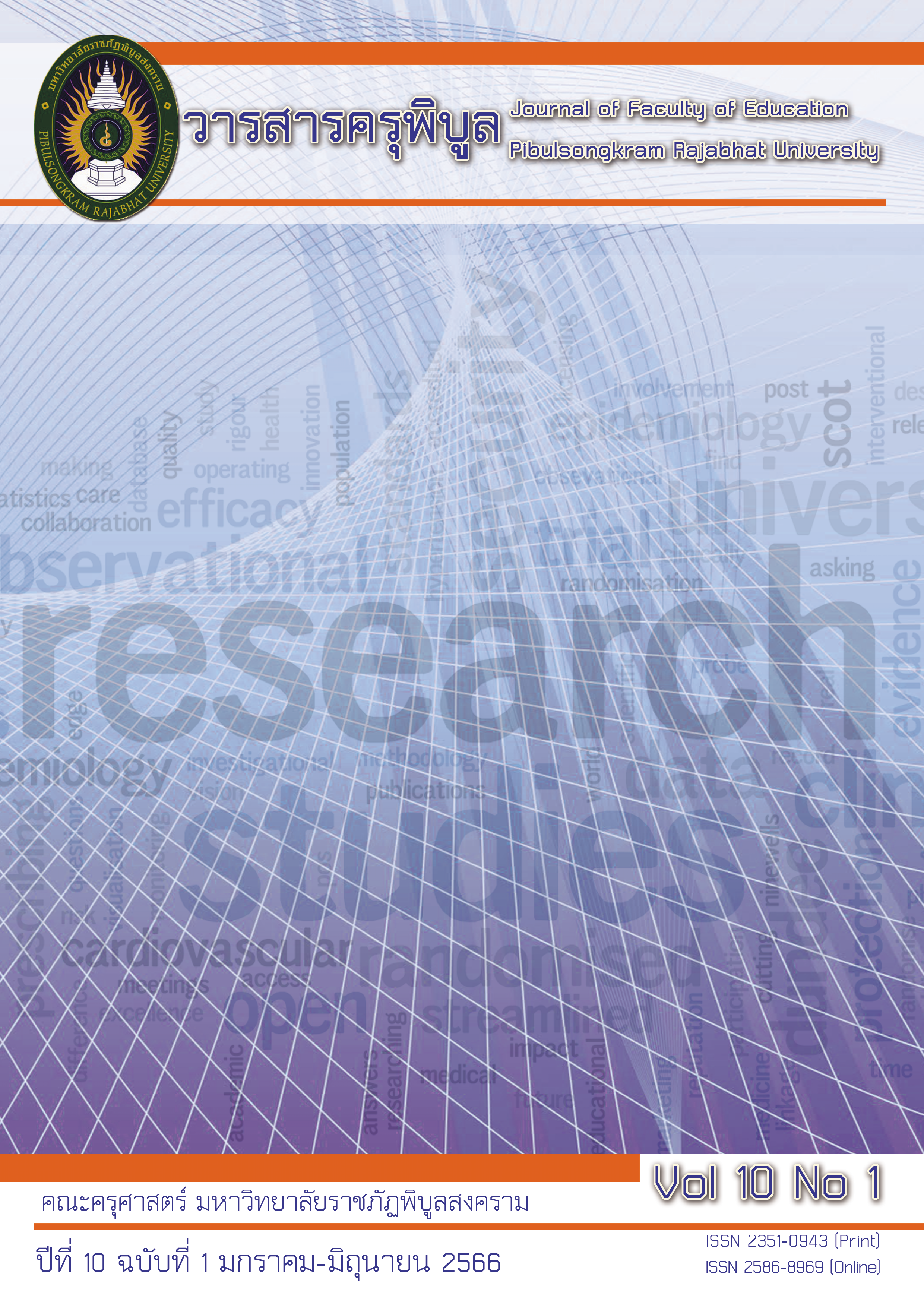THE EFFECT OF USING THE “DIGITAL BALANCE” ACTIVITY PACKAGE ON THE ROLE OF PARENTS TO PROMOTE MEDIA LITERACY SKILLS FOR EARLY CHILDHOOD CHILDREN
Keywords:
Activity Packages, Media literacy, the parental role, PreschoolersAbstract
The purpose of this research is to compare the roles of parents in promoting media literacy skills for early childhood children before and after using the “Digital Balance” activity package. Stratified random sampling was used to obtain sample group of 40 parents of kindergarten children in preschool child development centers, Kamphaeng Phet Province, using. The research tools were 1) the “Digital Balance” activity package, 2) the parental role assessment form in promoting media literacy skills for early childhood children, and 3) a semi-structured interview form. Data were analyzed by frequency distribution, mean, standard deviation, t-test and content analysis.References
ธิราภรณ์ มากมี. (2563). การศึกษาปัญหาการบริหารศูนย์พัฒนาเด็กเล็กสังกัดองค์กรปกครองส่วนท้องถิ่น
จังหวัดสุโขทัย. วารสารครุพิบูล, 7(2), 284-294
นิภาภรณ์ เสี้ยนมั่น. (2563). แนวทางการบริหารสถานรับเลี้ยงเด็กเอกชนเพื่อรองรับการศึกษา 4.0 ในจังหวัด
สมุทรสาครจํานวน 18 แห่ง. วารสารครุพิบูล, 7(2), 183-196
พรทิพย์ เย็นจะบก. (2557). การเรียนรู้เท่าทันสื่อสําหรับครูปฐมวัย. (ม.ป.ท.)
รัตนะ บัวสนธ์. (2556). การวิจัยเชิงคุณภาพทางการศึกษา= Qualitative research in education.
สำนักพิมพ์แห่งจุฬาลงกรณ์มหาวิทยาลัย
วรรณี แกมเกตุ. (2555). วิธีวิทยาการวิจัยทางพฤติกรรมศาสตร์. โรงพิมพ์แห่งจุฬาลงกรณ์มหาวิทยาลัย
สุรเกียรติ ธาดาวัฒนวิทย์. (2556). การพัฒนาเชิงโมเดลสาเหตุของการรู้เท่าทันสื่อและสารสนเทศของ
นักเรียนประถมศึกษาปีที่ 4-6: การวิเคราะห์ความไม่แปรเปลี่ยนระหว่างสังกัด. OJED, 8(1), 401-413
Chakroff, J. L. & Nathanson, A. I. (2008). Parent and school interventions: Mediation and
medialiteracy. The Handbook of Children, Media, and Development. Blackwell.
Essa, Eva. (1996). Introduction to early childhood Education. Delmar Publisher.
European Union. (2016). Classification of learning activities (CLA). Publications Office of the
European Union https://ec.europa.eu/eurostat/documents/3 85 95 98/ 7 65 97 5 0/KS- GQ-15-0 11-ENN.pdf/978de2eb-5fc9-4447-84d6-d0b5f7bee723
Fujioka, Y. & Austin, E. W. (2002). The relationship of family communication patterns
toparental mediation styles. Communication Research., 29(6), 642-665.
Ivanovic, M. (2014). Development of media literacy – an important aspect of modern
education. Procedia – Social and Behavioral Sciences., 149, 438-442.
Mille,E. (2005). Fighting technology for toddlers. British journal of educational technology.,
(2), 145-157.
National Association for Media Literacy Education. (2007). Core Principles of Media Literacy
Education in the United States. The National Academies Press.
Peace Corps. (2017). Environmental Activities for Youth Clubs and Camps. OPATS.
https://files.peacecorps.gov/documents/PC_Environmental_Activities_508_
mNd3UVx.pdf
Potter, J. (2011). Media literacy. Sage.
Rogow, F. (2015). Media literacy in early childhood education: Inquiry-based technology
Integration. Rouledge.
Downloads
Published
Issue
Section
License
Copyright (c) 2023 คณะครุศาสตร์ มหาวิทยาลัยราชภัฏพิบูลสงคราม

This work is licensed under a Creative Commons Attribution-NonCommercial-NoDerivatives 4.0 International License.
ลิขสิทธิ์เป็นของคณะครุศาสตร์ มหาวิทยาลัยราชภัฏพิบูลสงคราม


